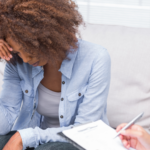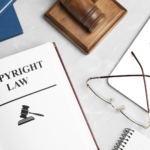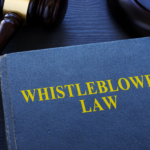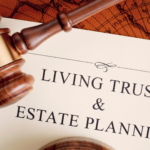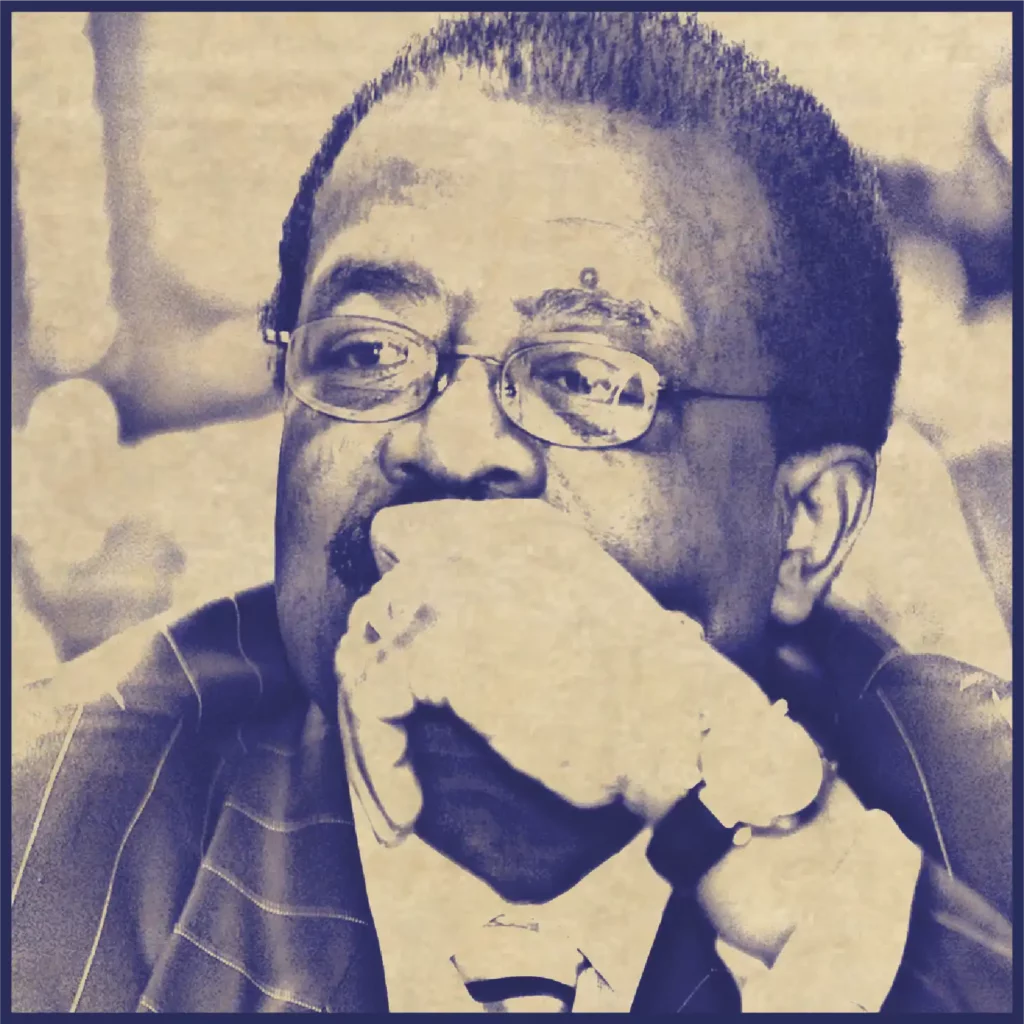The Gazette
Congress shall make no law respecting an establishment of religion, or prohibiting the free exercise thereof; or abridging the freedom of speech, or of the press; or the right of the people peaceably to assemble, and to petition the Government for a redress of grievances.
—The First Amendment, United States Constitution
The Cochran Firm stands for your First Amendment right as an American citizen. To learn more about your legal rights, please contact our 24/7 call center at 1-800-THE-FIRM (673-1555) or send us a message on our website. This right is carried both in the freedom to assemble and in the freedom of speech, which preserves not only the strength to verbalize protests and take part in a symbolic expression such as displaying an armband, but also organizing peaceful demonstrations and marches on some public spaces.
As an American protesting for justice, you have an obligation to stop those who attempt to turn peaceful protests into violence, riots, or looting. Stand up for the protection of your country, city, local businesses, neighborhoods, and especially those that cannot defend themselves. Americans protest because they understand they can make a difference by working together. Research reveals those who join in protest do so because they exhibit anger about injustices committed against certain groups that they have a commitment to, and believe they can make a difference by collaborating in protest. With a First Amendment right to peaceful demonstrations, Americans should utilize this to make change happen and stand for what they believe in. Most people do not have to be convinced about economic or political critiques. They simply have to be persuaded to follow the movement. Non-violence is expressive and efficient as a persuasion tactic. Through the power of kind words and demonstrations, peaceful protestors ultimately possess one of the best ways to get messages across to political officials and the public.
During recent protests and riots following the death of Minnesota resident George Floyd while in police custody, associate professor of sociology and director of the Brudnick Center on Violence and Conflict, Gordana Rabrenovic, stated, “There’s certainly more evidence that peaceful protests are more successful because they build a wider coalition.”
“Violence can scare away your potential allies. You need the people on the sidelines to say, ‘This is my issue, too,’” she went on to say.
There are many historic American demonstrations that were peaceful and powerful. The impact that these have had on the United States has been for the history books that we, as Americans, still look back on today. As we are always actively seeking change in many aspects of our society, we must remember what history has shown us and learn from it. From protests like Alabama's Montgomery Bus Boycott to more recent ones such as citizens fighting against the shutdowns during the pandemic of COVID-19 in 2020, many Americans could follow how others have brought about change and develop more ideas to figure out how to bring about more change.
Many years ago, American women did not possess the right to vote. Many brave crowds fought hard at state and local levels throughout the end of the nineteenth century, delivering modest increases toward women's suffrage. In 1913, the earliest significant national trials were initiated, starting with a large parade on March 3 in Washington, D.C. The parade was organized by Alice Paul for the National American Woman Suffrage Association, requesting a constitutional amendment and starring eight thousand marchers, including four mounted brigades, nine bands, twenty floats, and an illustrative performance near the Treasury Building. Although the parade featured a late commencement, it seemed to be off to a great start until the path at Pennsylvania Avenue grew overpowered with tens of thousands of onlookers. Those in the march were pressed and mocked by many in the large gathering of people. Some women were tripped and attacked by those in the crowd. Police officers appeared to be either cold to the scrambling paraders, or compassionate to the mob. Before the day ended, one hundred people in the march had been placed in the hospital. The abuse of the marchers magnified the matter into a remarkable news story, leading to congressional hearings and the D.C. police superintendent losing his job. What launched in 1913 took an additional seven years to obtain through the U.S. Congress. The Nineteenth Amendment attained the vote for females in 1920.
Formed in 1935, the United Auto Workers had much to stand for as a nascent union. During the Depression, General Motors executives began altering non-union plants' workloads, ultimately harming the United Auto Workers. Workers carried out a sit-in at the Fisher Body Plant in Flint, Michigan in December of 1936. Around 135,000 males were striking in 35 cities across America within two weeks. Although riots followed the sit-ins, the visions of music playing on assembly lines and men resting next to machines evoke the gentle strength behind the movement that gathered one of the largest unions in North America.
One's peaceful efforts can produce more development than anyone can imagine. Rosa Parks and the Montgomery Bus Boycott is one example. Though black Americans established around 70% of bus ridership in Montgomery, Alabama, Parks still had difficulty retaining her seat on December 1, 1955. With the illegal act of refusing to give up her position to a white man, Parks' arrest prompted the Montgomery Bus Boycott. After a year, the U.S. Supreme Court sustained a decision from a lower court that made the segregation of seating unconstitutional. "Mother of the civil rights movement" was a name given to Parks afterward. Her rebellious actions signified more prominent civil rights, ultimately expanding the message that everyone deserves equal positions.
"People always say that I didn't give up my seat because I was tired, but that isn't true. I was not tired physically, or no more tired than I usually was at the end of a working day. I was not old, although some people have an image of me as being old then. I was forty-two. No, the only tired I was, was tired of giving in." - Rosa Parks
In May of 1957, approximately twenty-five thousand demonstrators rallied at the U.S. Lincoln Memorial in commemoration of the third anniversary of the ruling of Brown v. Board of Education, and to push the federal government to pursue a final decision in the trial.
On August 28, 1963, a gathering exceeding 200,000 people assembled at the Lincoln Memorial, demanding equal rights for black Americans. The March on Washington directly impacted jobs and freedom. The event proposed the draw of attention to lingering hurdles and inequalities endured by black Americans one hundred years after emancipation. Dr. Martin Luther King Jr. presented his "I Have a Dream" speech during this occasion, which awakened the United States to progress.
NAACP
An anti-war demonstration in front of the U.S. Pentagon, headquarters of the Department of Defense, organized by the National Mobilization Committee to End the War in Vietnam on October 21, 1967, revealed visions that encapsulated a decade of flower power. The National Guard was no match for softened hippies seeking to drive change with nothing more dangerous than a few flower petals. Marching on the control center of the United State's most dominant combat force, protesters opposing the war on Vietnam were faced by military police who brandished rifles that pointed straight at their heads. Among the demonstrators was a man who wielded bunches of flowers.
"All of a sudden, this hero put a flower in the barrel of the rifle pointed at his head, and everyone was disarmed on both sides," Bill Zimmerman, a participant in the crowd of protesters, recollected. "The [military police] had a 'what the fuck is this?' expression. Then I realized what he was doing and thought it was brilliant. He worked his way down the line, and I saw him put seven, eight, maybe ten flowers in rifle barrels. The crowd surged, and I couldn't see him anymore."
Zimmerman and fellow demonstrators revisited Washington in 2017, marking the 50th anniversary of the movement at the Pentagon, a significant occasion involving flower power and a turning point in the opposition of the war on Vietnam. An excess of more than six hundred individuals were arrested in October of 1967, for acts of civil rebellion. The arrests came after an uprising against the draft, which led to the turning of around one thousand draft cards.
Black American track athletes John Carlos and Tommie Smith utilized their victories in the Mexico City Olympic Games in 1968 to showcase their resistance to the sustained oppression of blacks in the United States. Both men wore black socks to signify black poverty, while Carlos displayed beads to symbolize the lynching of black Americans. Collectively they lifted their black-gloved fists in a call for unity. In solidarity, Australian silver medalist Peter Norman donned an Olympic Project for Human Rights badge. Norman experienced a significant welcome upon his return home. Both Carlos and Smith were removed from the Olympic Games afterward. After the event during a press conference, Smith stated, If I win, I am an American, not a black American. But if I did something bad then they would say 'a Negro.' We are black, and we are proud of being black.”
“Black America will understand what we did tonight,” Smith added.
Cesar Chavez urged for peaceful boycotts, protests, and a grueling yet nonviolent 25-day hunger strike, which drove to legislative changes to cease exploitative abuse of American farmworkers in the late 1960s. He led a five-year strike in Delano, California, bringing unity to more than two thousand farmers to demand minimum wage mostly for underpaid and overworked Filipino farmworkers. An excess of 17 million Americans boycotted grapes from California, which assisted in securing unions, higher wages, and assurances for farmworkers. As the farmworker movement grew, it grew to become a pressing political force that was dreaded by growers and polished by politicians.
"I am convinced that the truest act of courage, the strongest act of humanity, is to sacrifice ourselves for others in a totally nonviolent struggle for justice." - Cesar Chavez
The Ohio National Guard opened fire into a gathering of people protesting the Vietnam War at Kent State University on May 4, 1970. Nine students were injured and four were killed. The disaster was a sad, significant moment for America divided by the struggle in Southeast Asia. In the shooting's direct result, a student-led walkout secured the temporary closing of colleges and universities across the nation. The protests and marches lasted for four days to get President Nixon to end the invasion of Cambodia and stop the war in Vietnam. According to one source, "some political observers believe the events of that day in northeast Ohio tilted public opinion against the war and may have contributed to the downfall of President Richard Nixon." While the protests sparked no instant changes in American foreign policy, it did bring change with further demonstrations across the country, possibly contributing to the ending of the war in Vietnam.
Chicago History Museum
The Lusty Lady Strike of San Francisco, California brought about a gathering of strippers at San Francisco's Lusty Lady club to establish a union. The strippers went on strike, protesting in front of the business while pleading with patrons not to enter unless the women were provided the ability to develop a union. After a long legal struggle, the dancers were finally authorized to form a union.
For some reason, public breastfeeding remains a controversial topic in America. However, one woman stimulated change in this significant issue. In 2007, Brooke Ryan was sitting in the back of a restaurant while breastfeeding her seven-month-old baby. The establishment's manager allegedly requested Ryan to cover herself — a violation of the law. As a direct result, women in thirty states across the nation held "nurse-ins." These "nurse-ins" consisted of public breastfeeding. They ultimately brought about attention, resulting in the restaurant's release of an announcement stating that the "situation has provided an opportunity for us to work with our associates to ensure we're making nursing mothers feel welcome."
"We will also accommodate other guests who would be more comfortable moving to another area of the restaurant."
East Valley Tribune
Hundreds of Americans gathered in April of 2020 to protest Michigan's stay-at-home orders during the pandemic of COVID-19. During the epidemic, many states across the United States mandated orders to stay at home, ultimately leading to the closing of businesses, schools, and more. The abrupt pause of business and life in America brought frustration among many citizens, and the orders in Michigan were said to be "one of the strictest in the United States."
"Open the restaurants. Open the bars. Open the movie theaters," one anonymous protester announced. "Michigan, wake up, America."
The protest was organized by Michigan Conservative Coalition, a nonprofit with more than 16,000 followers that view Michigan's stay-at-home orders as unconstitutional.
"I vehemently support the First Amendment right to protest government actions at the Capitol or elsewhere around the state; however any such activity must be done in a manner that is safe and lawful," Dana Nessel, Michigan's Attorney General, addressed in a tweet, supporting peaceful protests.
The loss of 46-year-old George Floyd in Minnesota police custody in May of 2020 ignited public outrage, peaceful protests, and violent riots across America. The disorderly riots include looting of businesses, attacks on cops, vandalism and arson in neighborhoods, shootings, and more.
After seeing the violence that ensued in the streets, Floyd's brother Terrence Floyd urged individuals to practice peace while protesting.
"If I'm not over here blowing up stuff, messing up my community, what are y'all doing? Y'all doing nothing. Because that's not going to bring my brother back at all," Floyd announced while at the death site of his brother.
"The same thing has been happening. Y'all protest, y'all destroy stuff, and they don't move. You know why they don't move? Because it's not their stuff, it's our stuff. They want us to destroy our stuff. They not gonna move!" he added. Floyd ended his announcement proclaiming, "I know my brother would not want violence," urging the masses, "let's do this peacefully, please."
On June 1, 2020, Black Lives Matter demonstrators gathered in solidarity for Floyd. The individuals were seen on the ground with their hands behind their backs near the Garfield County Sheriff's Office and Glenwood Springs City Hall in Glenwood Springs, Colorado. Another group in Mobile, Alabama, held eight minutes of silence in observance of Floyd's death during a peaceful protest on June 6, 2020. In addition to Colorado and Alabama, peaceful demonstrations have been carried out in other states throughout the United States.
There are many ways to protest in the United States today in a modest behavior. At The Cochran Firm, we fully support your right of peaceful protest and freedom of speech. If you have legal questions about protesting, please contact our 24/7 call center at 1-800-THE-FIRM (673-1555) or send us a message on our website. Whether the form of protest is expressed from the comfort of one's home or on the frontline in the streets, Americans possess the right to peacefully assemble and express their freedom of speech.
Not every person can produce skilled and professional protest art. Still, anyone can own the ability to create art pieces that are inspired by how they are undergoing emotions during their current social environments.
A co-organizer for Black Lives Matter DC, Makia Green, stated that they would relish in observing more people producing artwork in support of protests.
"Culture is very important in the moment, and we need people making signs and banners that align with what we are trying to change," Green said. "You can easily make a Black Lives Matter banner and put it on your balcony or up in your window. You can even make a song or write a poem. Whatever you feel moved to create and make is important."
Writing letters, tweeting, emailing, and calling one's local officials to push for policies and demand action influences policymakers to establish meaningful developments.
"Some people just can't take the risk of going out in public because of their safety, and in some places protesting means risking their lives," Green stated. "Calling your officials and tweeting in defense of black lives is just as important as taking to the streets."
Donating to organizations that are fighting for what you support is a great way to show your endorsement. This donation could be in the form of money or supplying items for street medics. These volunteers provide essential medical assistance to those who are injured while protesting. These individuals typically include people with fundamental first aid training, firefighters, doctors, and nurses.
For protesters on the streets, consider creating containers that include snacks, water bottles, hand sanitizer, and face masks. You can physically leave them with those at protest sections or deliver them to a friend who is participating in a protest. You can also donate money to local groups or organizers who will organize and administer supplies in their area. Use search engines like Google or social media such as Twitter, Instagram, and Facebook to discover advocacy groups that unite you with protest organizers.
Another great way to protest from home is to draft letters of opposition or support. Write your feelings down on paper and send the message to public officials, organizations, or other people of importance to you. The act of writing down your thoughts and opinions to understand them more precisely is called journaling, a form of therapy to improve mental health. If an individual struggles with anxiety, depression, or stress, this therapy is a great idea to express emotion. It can assist in gaining control of emotions and better one's mental health. This form of protest can be beneficial because it presents a physical sense of passion, whether in support or objection of an issue or cause.
Take to the streets to share your emotion through the spoken word. Be heard from others and persuade others to stand with you or change their thoughts about a cause or issue.
According to the Cambridge University Press, the definition of picket is "a worker or group of workers who protest outside a building to prevent other workers from going inside, especially because they have a disagreement with their employers." Picketing is a valid and historical form of protest.
Before you begin a petition, consider the goal. Articulate your position. Gather signatures from the public to petition for something. Explain and promote the petition, why it is crucial, and persuade others to sign, support, and fight for the cause. Present the petition to the necessary individuals after gaining the appropriate amount of signatures. The White House provides a step-by-step guide on the creation of a petition.
Individuals fighting for rights and justice are far too often unaware of the complete array of nonviolent activity styles. Consideration of the dynamics of peaceful disagreement and the meticulous choice of methods can enhance a group's probability of success. The Albert Einstein Institution compiled a list of symbolic public acts such as displays of flags and symbolic colors, wearing of symbols, presentations of portraits, prayer and worship, protest disrobings, delivering symbolic objects, symbolic lights, paint as protest, and more.
Marches, pilgrimages, parades, religious processions, motorcades all fall under processions that spread the word of a cause or issue. Along with these forms, individuals can promote and perform distinguished drama or music. These practices could include skits and pranks, performances of music or plays, and singing.
The Cochran Firm aims to support your rights as an American. We stand behind you every step of the way. If you have exercised your First Amendment right and believe you have been wrongfully arrested during a peaceful protest, begin by reading our blog post Mistakes to Avoid if You Are Ever Arrested. To speak with a specialist, please contact our 24/7 call center at 1-800-THE-FIRM (673-1555) or send us a message on our website.
Contact us today for a Free Consultation
